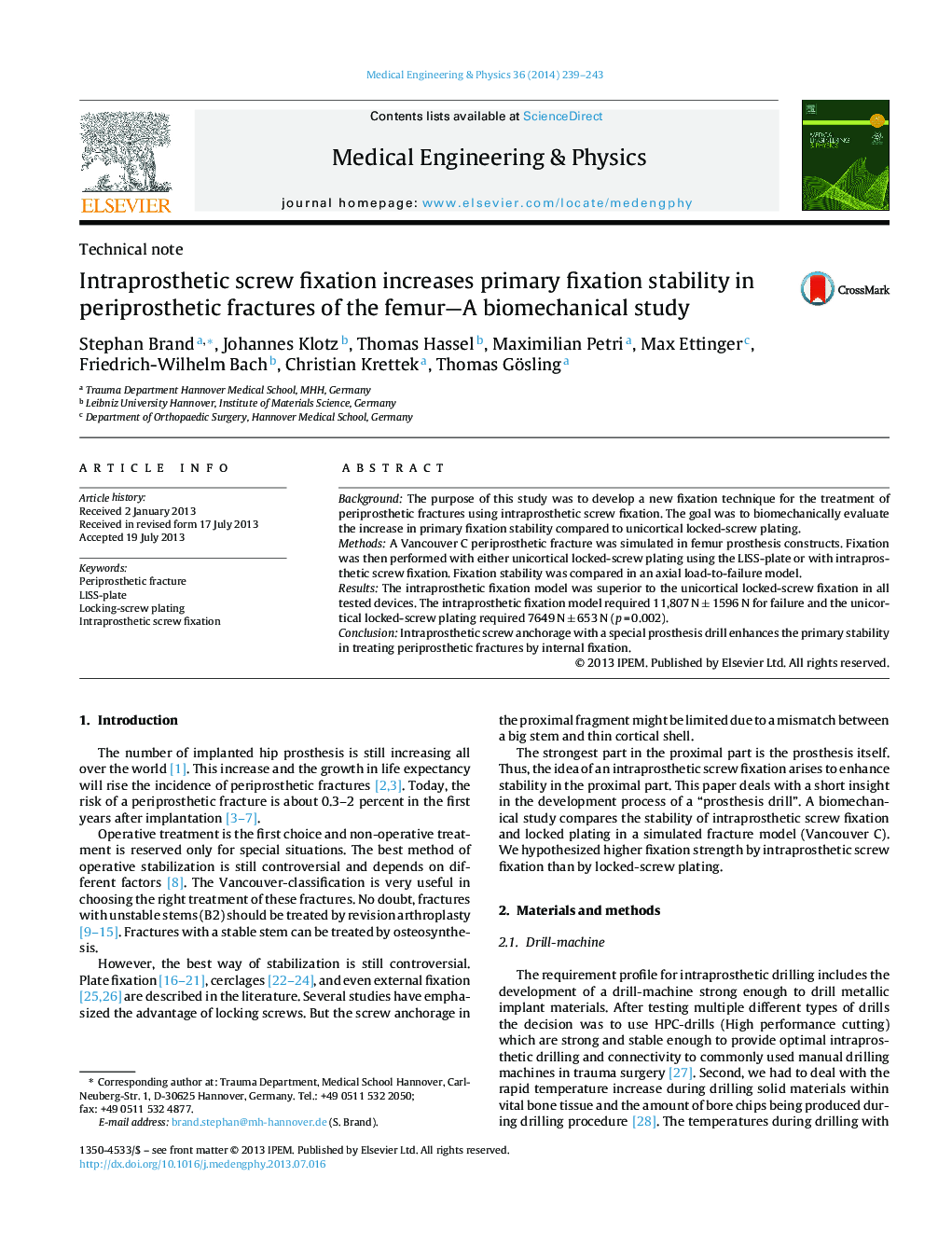| Article ID | Journal | Published Year | Pages | File Type |
|---|---|---|---|---|
| 876004 | Medical Engineering & Physics | 2014 | 5 Pages |
BackgroundThe purpose of this study was to develop a new fixation technique for the treatment of periprosthetic fractures using intraprosthetic screw fixation. The goal was to biomechanically evaluate the increase in primary fixation stability compared to unicortical locked-screw plating.MethodsA Vancouver C periprosthetic fracture was simulated in femur prosthesis constructs. Fixation was then performed with either unicortical locked-screw plating using the LISS-plate or with intraprosthetic screw fixation. Fixation stability was compared in an axial load-to-failure model.ResultsThe intraprosthetic fixation model was superior to the unicortical locked-screw fixation in all tested devices. The intraprosthetic fixation model required 11,807 N ± 1596 N for failure and the unicortical locked-screw plating required 7649 N ± 653 N (p = 0.002).ConclusionIntraprosthetic screw anchorage with a special prosthesis drill enhances the primary stability in treating periprosthetic fractures by internal fixation.
